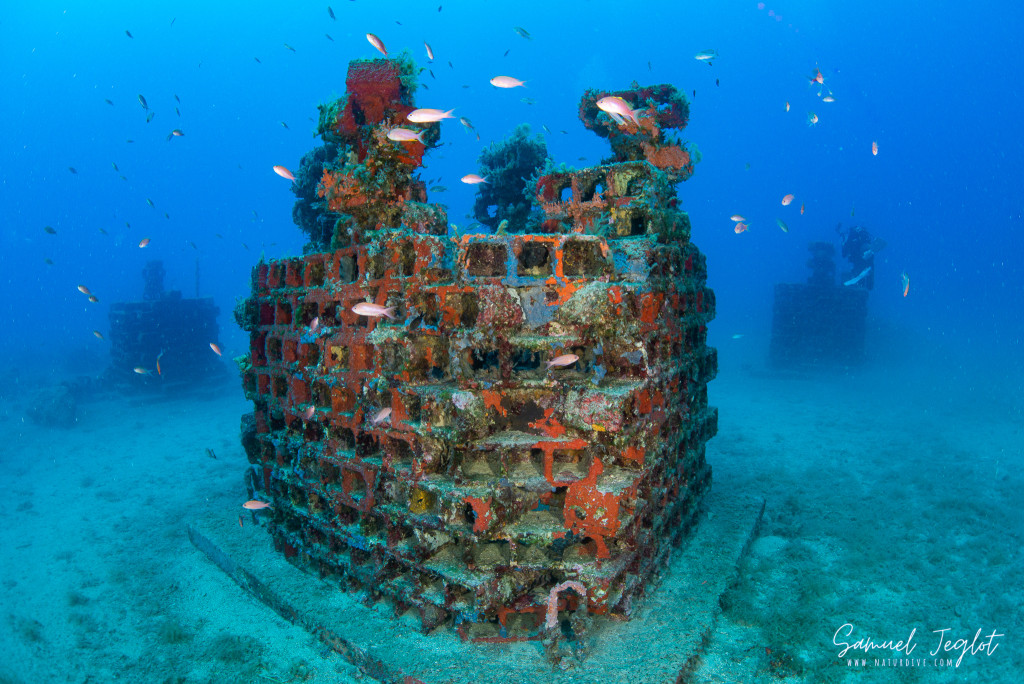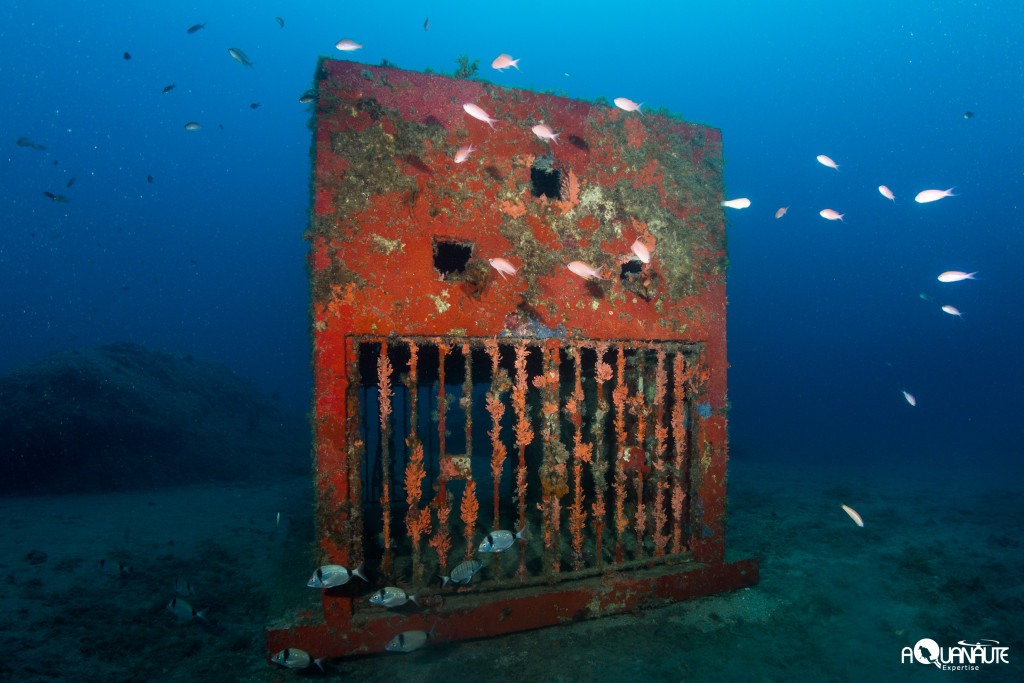Immersion and monitoring of artificial reefs
The idea of creating submerged artificial substrates in order to increase the productivity of a given area appeared in Japan in the 17th century with the aim of improving coastal fishing. Subsequently, the Japanese remained masters in this field and, from the 1930s, artificial reefs were declared of public utility. Their use in other countries only developed later.
In Monaco, the immersion of artificial reefs constituted one of the most emblematic actions of the AMPN, positioning the Principality as one of the pioneers in this field.
Thus, since the creation of the Larvotto Marine Protected Area in 1976, discussions have been initiated to submerge artificial habitats to increase biodiversity.
In June 1977, the first reefs, made up of 300 tonnes of natural rock, were placed by barge on 3 sites at a depth of 25 meters. The resulting dispersion did not achieve the desired results. This is why the decision was taken to build reefs on land with cellular concrete slabs cemented together and fixed on reinforced concrete slabs. Thus, between June 1979 and September 1983, 26 alveolar reefs, of 3 different types, were submerged at depths varying between 8 and 32 meters.

Three “large alveolar” type slab reefs submerged in 1983.
Subsequently, other structures of different shapes were tested. In December 1986, a pyramidal reef made up of 38 reinforced concrete cellular boxes was assembled at a depth of 16 meters on sand. The boxes were stacked on top of each other, leaving spaces between them so as to provide mazes for vagile fauna.
So-called “Thalamé” reefs, 3 in number and shaped like turtle shells with 3 entrances at ground level to create shelters for coastal fish, were submerged in August 1989.
A coral farming experiment was also attempted in 1989 with the immersion of concrete coral caves, initially distributed between the Spélugues Marine Protected Area and that of Larvotto, then grouped together on a single site at Larvotto by around thirty meters depth. Fragments of red coral colonies, taken from the natural environment, were glued to supports inside the caves. This method has been shown to be particularly effective with regard to the survival of transplanted colonies, their ability to reproduce and their growth rate. This experiment was not continued in the long term, but the 4 coral caves nevertheless play the role of classic artificial reefs for many species.

One of the coral caves submerged in 1989.
Except for the coral caves, the reefs have all been used for halieutic purposes, the objective being to encourage the increase and conservation of marine biodiversity by diversifying the habitats of the Marine Protected Area. These experimental projects made it possible to study and monitor the biological and ecological evolution of different types of reefs and to sometimes note the return of certain species of fish.
From the 2000s, the AMPN submerged other artificial reefs, always made up of cellular slabs, with the aim to raise awareness by allowing children and adults to participate in their construction and to experience firsthand the interest of this type of measures.
In 2017, a new generation of reefs was submerged in the Larvotto MPA. The latest technological advances in 3D printing have opened up new perspectives by making it possible to define a design that best reflects the complexity of the natural environment. As 3D printers know no limits to the architectural complexity of the objects to be created, Professor Patrice Francour has imagined a unique 3-dimensional digital model of an artificial reef. This project came to fruition with the immersion in November 2017 of 6 3D reefs weighing 2.5 tonnes each made up of Dolomite sand and volcanic ash, an eco-responsible natural product.
These different generations of reefs have been the subject of environmental monitoring that is heterogeneous and independent of each other. From a technical point of view, these monitoring were carried out using different protocols and the data acquired are sometimes not comparable.
In order to standardize this monitoring, to characterize the structural state of conservation of each reef and to assess their effectiveness, a bibliographic search and an inventory were carried out between 2021 and 2022.
With the help of Thalassa Marine research and Mr. Stéphane JAMME (Aquanaute Expertise), the AMPN subsequently initiated a more precise inventory to characterize benthic (living organisms attached to the substrate) and ichthyological (the fish populations) colonization of these reefs.
The data collected already shows that artificial reefs respond well to the objectives for which they were submerged and that they ensure their role as substrate and habitat for marine species. Additional studies will make it possible to propose management solutions for the oldest reefs in order to optimize their efficiency.

Dr. Alexis PEY and Stéphane JAMME carrying out benthic colonization measurements.
